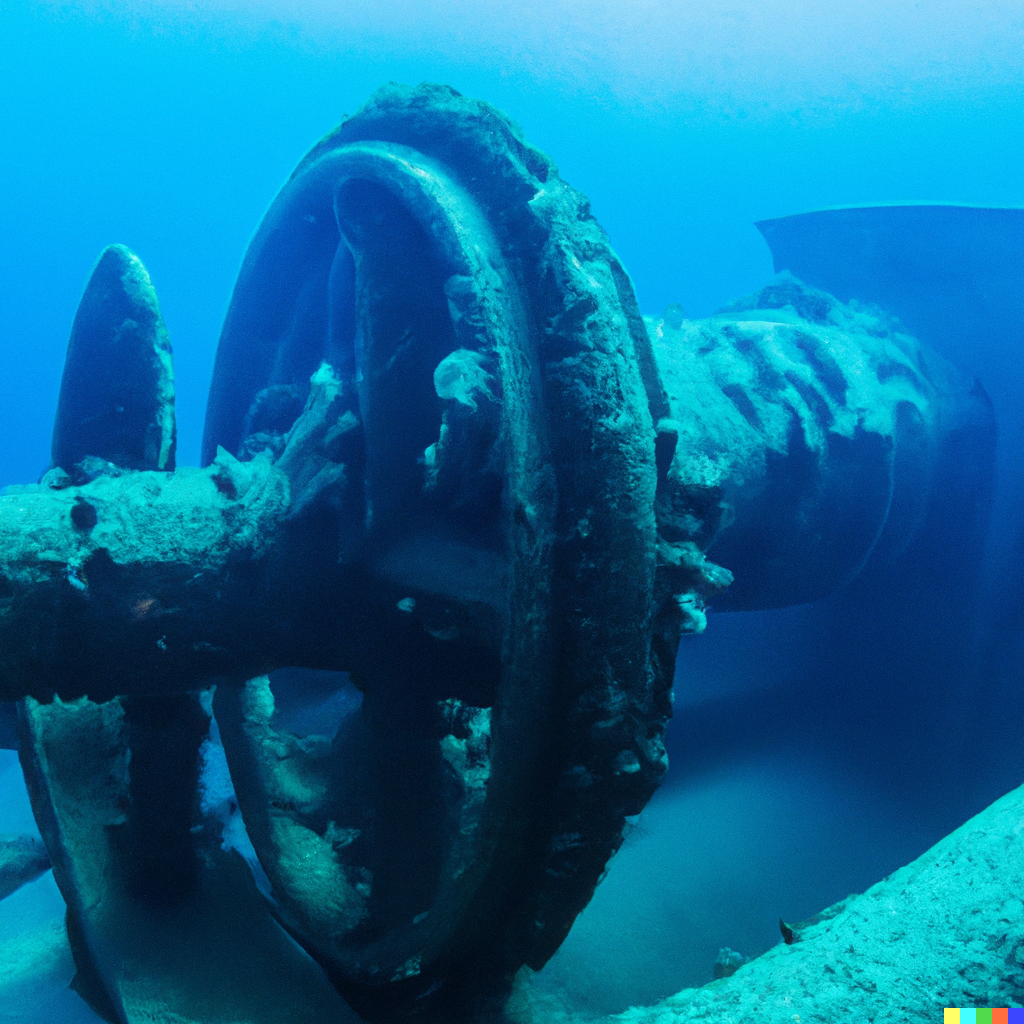L15 examples
Problem 1
A rigid chamber with insulated walls is divided into two parts by a partition. The left-hand chamber has a volume of \(\require{color}{\color[rgb]{0.079785,0.618358,0.483717}0.1 \; m^3}\) and contains air at \(\require{color}{\color[rgb]{0.164799,0.878862,0.723179}475^{\circ} \; C}\) and \(\require{color}{\color[rgb]{0.315209,0.728565,0.037706}20 \; MPa}\). The right hand chamber has a volume of \(\require{color}{\color[rgb]{0.079785,0.618358,0.483717}0.2 \; m^3}\) and contains air at \(\require{color}{\color[rgb]{0.164799,0.878862,0.723179}425^{\circ} \; C}\) and \(\require{color}{\color[rgb]{0.315209,0.728565,0.037706}10 \; MPa}\). The partition is ruptured and eqlibrium is restored adiabatically.
Explain why this is not a quasi-equilibrium process.
Calculate the total mass of air.
Using the first law, find the final temperature of air. Please also calculate the final pressure.
Is this process reversible?
Solution
When the partition is ruptured, the two parts are clearly not at equlibrium. The process starts out of equlibrium so cannot be quasi-equlibrium.
The total mass may be calculated as follows:
\[ \large \require{color} m_1 = {\color[rgb]{0.315209,0.728565,0.037706}p_1} {\color[rgb]{0.079785,0.618358,0.483717}V_1} / R {\color[rgb]{0.164799,0.878862,0.723179}T_1} = {\color[rgb]{0.315209,0.728565,0.037706}20 \times 10^{6}} \times {\color[rgb]{0.079785,0.618358,0.483717}0.1} / \left( 287 \times \left( {\color[rgb]{0.164799,0.878862,0.723179}475 + 273.15 }\right) \right) = 9.314 \; kg \]
\[ \large \require{color} m_2 = {\color[rgb]{0.315209,0.728565,0.037706}p_2} {\color[rgb]{0.079785,0.618358,0.483717}V_2} / R {\color[rgb]{0.164799,0.878862,0.723179}T_2} = {\color[rgb]{0.315209,0.728565,0.037706}10 \times 10^{6}} \times {\color[rgb]{0.079785,0.618358,0.483717}0.2} / \left( 287 \times \left( {\color[rgb]{0.164799,0.878862,0.723179}425 + 273.15 }\right) \right) = 9.982 \; kg \]
Thus, we have
\[ \large m = m_1 + m_2 = 9.314 + 9.982 = 19.3 \; kg \]
- From the first law we have
\[ \large \require{color} {\color[rgb]{0.334690,0.296180,0.998454}Q} - {\color[rgb]{0.562040,0.190215,0.568721}W} = {\color[rgb]{0.878548,0.880173,0.060757}\Delta U} \]
The chamber is insulated and rigid, so both \(\require{color}{\color[rgb]{0.334690,0.296180,0.998454}Q}\) and \(\require{color}{\color[rgb]{0.562040,0.190215,0.568721}W}\) are zero. Thus \(\require{color}{\color[rgb]{0.878548,0.880173,0.060757}\Delta U} = 0\).
This results in
\[ \large \require{color} m_1 {\color[rgb]{0.878548,0.880173,0.060757}c}_{\color[rgb]{0.079785,0.618358,0.483717}V} {\color[rgb]{0.164799,0.878862,0.723179}T_1} + m_2 {\color[rgb]{0.878548,0.880173,0.060757}c}_{\color[rgb]{0.079785,0.618358,0.483717}V} {\color[rgb]{0.164799,0.878862,0.723179}T_2 }= \left( m_1 + m_2 \right) {\color[rgb]{0.878548,0.880173,0.060757}c}_{\color[rgb]{0.079785,0.618358,0.483717}V} {\color[rgb]{0.164799,0.878862,0.723179}T_3} \]
where the internal energy has an arbitrary datum.
\[ \large \require{color} {\color[rgb]{0.164799,0.878862,0.723179}T_3} = \left( 9.314 \times {\color[rgb]{0.164799,0.878862,0.723179}475} + 9.982 \times {\color[rgb]{0.164799,0.878862,0.723179}425} \right)/19.3 = {\color[rgb]{0.164799,0.878862,0.723179}449^{\circ} C} \]
Please note the above works because of the arbitrary datum. Finally, for the pressure, we have
\[ \large \require{color} {\color[rgb]{0.315209,0.728565,0.037706}p_3} = \left(m_1 + m_2 \right) \frac{R {\color[rgb]{0.164799,0.878862,0.723179}T_3}}{{\color[rgb]{0.079785,0.618358,0.483717}V_3}} = 19.3 \times 287 \times \frac{\left( {\color[rgb]{0.164799,0.878862,0.723179}449 + 273.15} \right)}{0.3} = {\color[rgb]{0.315209,0.728565,0.037706}13.33 \; MPa} \]
- This process is irreversible as it is not associated with quasi-equlibrium.
Problem 2
State whether each of the following processes is reversible or irreversible.
A gas compressed by a frictionless piston in an insulated cylinder. During the compression the pressure remains uniform throughout the cylinder.
Water contained in a metallic container that is continuously stirred with a paddle. During the process the temperature of the water remains constant at \(\require{color}{\color[rgb]{0.164799,0.878862,0.723179}15^{\circ} \; C}\) above that of the surroundings.
A battery discharges through an electrical resistor.
A \(1 \; kg\) block of copper at \(\require{color}{\color[rgb]{0.164799,0.878862,0.723179}95^{\circ} \; C}\) is cooled by immersion in a bucket of cold water at \(\require{color}{\color[rgb]{0.164799,0.878862,0.723179}5^{\circ} \; C}\).
A quantity of ammonia, which is a non-ideal gas, is compressed by a frictionless piston inside a metal cylinder. The compression is carried out very slowly such that the temperature of the ammonia differs only infinitesimally from that of the surroundings.
Solution
Reversible. The process has no heat transfer, and since the pressure remains uniform it may be assumed that the system is always in mechanical equilibrium.
Irreversible. This is direct conversion of work into heat for a cyclic system.
Irreversible. Treating the resistor as the system, this is also conversion of work into heat for a cyclic system.
Irreversible. Heat transfer across a finite temperature difference.
Reversible. As the process is very slow, it may be assumed that it is in quasi-equilibrium, and in particular, heat transfer is across an infinitesimal temperature difference. Also note that the system is not undergoing a cycle.
Problem 3
A cyclic powerplant is proposed which exploits the temperature difference between the top and bottom of the ocean. If the water temperature at the surface is \(\require{color}{\color[rgb]{0.164799,0.878862,0.723179}80.6 \; F}\) and that at the bottom is \(\require{color}{\color[rgb]{0.164799,0.878862,0.723179}39.2 \; F}\), what is the maximum possible thermal efficiency of the plant, and what conditions are necessary to achieve it?

Solution
Following the notes in Lectures 14 and 15 it is clear that
\[ \large \require{color} {\color[rgb]{0.399984,1.000000,0.400002}\eta} \leq 1 - \frac{{\color[rgb]{0.164799,0.878862,0.723179}T_H}}{{\color[rgb]{0.164799,0.878862,0.723179}T_C}} \]
However, we must exercise some caution here. The temperature to be used here must in the Kelvin scale, for a negative temperature has no meaning (infact it would result in an efficiency that is greater than 1!). The conversion from Fahrenheit to Kelvin is given as follows:
\[ \large \require{color} {\color[rgb]{0.164799,0.878862,0.723179}80.6 \; F} \rightarrow \ \frac{\left( {\color[rgb]{0.164799,0.878862,0.723179}80.6} - 32 \right) \times 5 }{9} + 273.15 \; K = {\color[rgb]{0.164799,0.878862,0.723179}300.15 \; K} \]
Likewise, for the other temperature
\[ \large \require{color} {\color[rgb]{0.164799,0.878862,0.723179}39.2 \; F} \rightarrow \ \frac{\left( {\color[rgb]{0.164799,0.878862,0.723179}80.6} - 32 \right) \times 5 }{9} + 273.15 \; K = {\color[rgb]{0.164799,0.878862,0.723179}277.15 \; K} \]
Thus the efficiency is given by
\[ \large \require{color} {\color[rgb]{0.399984,1.000000,0.400002}\eta} \leq 1 - \frac{{\color[rgb]{0.164799,0.878862,0.723179}277.15}}{{\color[rgb]{0.164799,0.878862,0.723179}300.15}} = {\color[rgb]{0.399984,1.000000,0.400002}0.0766} \]
or alternatively as \(\require{color}{\color[rgb]{0.399984,1.000000,0.400002}7.66 \; \%}\). Note that the maximum efficiency occurs when all processes are reversible.